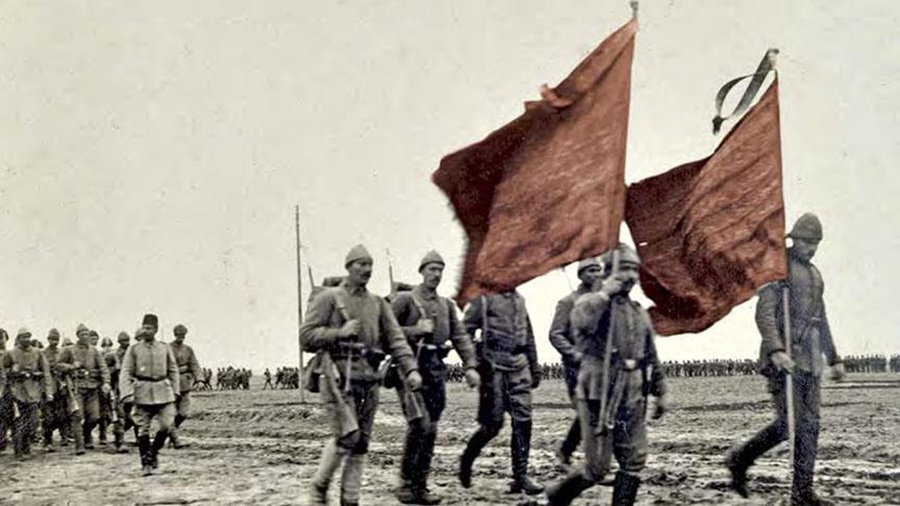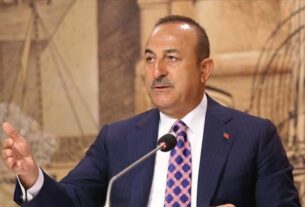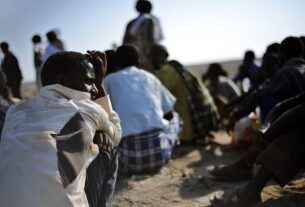Wed 29 April 2020:
In his book My Campaign in Mesopotamia, published in 1920, British General Charles Vere Ferres Townshend chronicles what happened during the 17-month period from the British troops’ landing on the Gulf of Basra until their surrender to Khalil Pasha.
The Committee of Ottoman Military History, established by the order of Sultan Mehmet V, translated Townshend’s book into Ottoman Turkish in a very short time and published it in 1921 with annotations to some of the British general’s statements, which helped create an analysis of the war that attempted to reflect the opinion of both sides. This significant book has later been printed in modern Turkish as well.
British forces’ landing in the Gulf of Basra
As the commander of the Sixth Indian Division of the British army, General Arthur Barrett got sick before the Battle of Shuaiba, Corps Commander General John Nixon appointed Charles Vere Ferrers Townshend, who was in India at the time, to the command of the division. Townshend immediately set off.
“We left Karachi at midnight on April 18-19, 1915 … It took us five days to reach Basra. We arrived at al Faw early in the morning on April 23rd and by noon we reached Basra, 95-125 km to where Shatt al Arab flows into the sea. The weather in Basra was very hot.”
“Muslim Pashtuns do not want to fight”
More than one million soldiers from India fought in the British Empire army ranks during the First World War. Some of them were combat troops and some were support units. Throughout the war 74,000 of these soldiers died and 67,000 of them were injured. The 6th Indian Division of the British army consisted of Hindus, Sikhs, Bangladeshis, Gurkhas and Muslim Pashtuns. Townshend tells how Muslim troops did not want to fight against Turks during the Battle of Kurna, which was the first battle he commanded against the Ottomans:
“Three Pashtun squadrons from one of the Indian regiments have lost their love and trust [in the British army]. Rumour has it that they opened fire on their fellow soldiers during the Battle of Subhan and openly refused to fight against Muslim Turks. I suggested that a small labour battalion could be made out of these three squadrons.”
Major General Townshend further writes that other Muslim soldiers among Indian troops continued to behave similarly in subsequent battles:
“The combined platoon of the A wing were withdrawn and moved to the other side of the shore via the bridge. I heard that a havildar and a couple of soldiers from the 20th Punjabi Regiment, who were serving as part of that platoon, fled to the direction of Turkish troops. This was bad news as it meant that the enemy would find out the manoeuvre of our main forces.”
Townshend also notes that Nurettin Bey did not believe the Indian soldiers, thought their escape was a stratagem and therefore did not change the position of his forces.
Turkish soldiers deceiving British surveillance aircrafts
Aircrafts were being newly used in the First World War. The Siege of Ku al Amara marked the first time in history when the British used aircrafts to drop food and ammunition from the sky. However, aircrafts were most efficiently used for intelligence purposes. Townshend was getting reports about the situation at the battlefront on an hourly basis.
“…Major Reilly took off immediately and came back at 17:30, joining me in Aziziyah. He said while he was flying over Salman Pak at 17:00 he saw that this position was probably invaded, that there were ships, rowboats and depots around, and that the number of enemy soldiers was at least 4,000-5,000. He reported that there were a ship and a rowboat full of soldiers in Zor Bend, 22 km to the west and northwest of Aziziyah. Reilly also saw camouflaged tents.”
Townshend, who was very close to seizing Baghdad at the Battle of Salman Pak, describes a tactic Turks used to deceive the British:
“Surveillance aircrafts could be easily deceived by enemy troops, who moved in an opposite direction of their actual marching direction when monitored by aircrafts and then started to move in their actual direction once aircrafts go back to deliver intelligence to their own forces.”
Number of soldiers in the Ottoman force
Townshend mentions the number of Ottoman soldiers participating in the siege as well as the number of their casualties. However, these figures are far more than the ones, which the Committee of Ottoman Military History cites based on the reports of Turkish commanders in the region. While Townshend estimates that the Turkish army reached a man power of 30,000 soldiers during the Siege of Kut al Amara, Ottoman figures say this number was only 17,000. Turkish troops, which pushed back General Alymer’s army of 19,000 soldiers that came to help the British forces besieged in Kut, were positioned as follows:
3,500 soldiers at the Falahiya front, 8,300 soldiers at the coast on the right, 5,000 soldiers besieging Kut al Amara, and 2,300 reserves near Mehdi.
Moment of surrender
When the British attempt to send food and ammunition to the besieged forces on April 24-25 failed, Townshend was ordered to surrender.
The British commander ordered his men to destroy their weapons and ammunition, take down and burn the British flag so that it would not be seized by the enemy, and raise a white flag.
“A Turkish battalion entered the town as a guarding force. Khalil Pasha came to visit me. I presented my sword and gun to him. He did not want to take them, saying “Your sword and gun always belong to you as they have been until now”. He also told me that I was going to be sent to Istanbul as a valuable guest of Turkish people. My troops, on the other hand, were going to be sent to Anatolia – to places near the sea and with fine weather conditions.”
Townshend had one final request from Khalil Pasha:
“As a last request, I asked Khalil Pasha to send my beloved dog Spot to my friend Sir Wilfred Peek so that he would send him back to my home. Spot had been very loyal to me.”
After about 2,5 years of captivity in Istanbul, Townshend went back to London. When he arrived there, there were only his wife, his elder daughter and his dog Spot at the port waiting to welcome him.
Townshend under surveillance in Istanbul
Townshend spent his Istanbul days in Heybeliada and Büyükada. His confinement was limited to surveillance by naval officers. He frequently attended parties in Istanbul. The British general, who also met with Enver Pasha on a number of occasions, recalls one of his conversations with him:
“I met with Enver Pasha at the Ministry of Navy on August 11th (1917). It was a long and friendly gathering. He told me that although I was granted permission to go back to the UK a year ago, the German refused to let me go.”
-Source: Al Jazeera News
Think your friends would be interested? Share this story!





